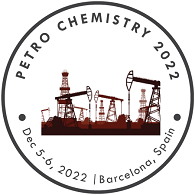Piping and vessel engineering & Transport Phenomena
Industrial process piping (and accompanying in-line segments) can be manufactured from wood, fiberglass, glass, steel, aluminum, plastic, copper, and cement. The in-line parts, known as fittings valves, and different gadgets, normally sense and control the pressure, stream rate and temperature of the transmitted liquid, and usually are incorporated in the field of piping design (or piping engineering). Piping frameworks are documented in piping and instrumentation diagrams (P&IDs). If necessary, pipes can be cleaned by the cylinder cleaning process.
Transport phenomena are ubiquitous all through the engineering disciplines. Probably the most widely recognized instances of transport analysis in engineering are seen in the fields of procedure, chemical, organic and mechanical engineering, but the subject is a fundamental component of the curriculum in all disciplines involved in any way with fluid mechanics, heat exchange, and mass exchange. It is now considered to be a part of the engineering discipline as much as thermodynamics, mechanics, and electromagnetism.
- Electrical resistance tomography (ERT)
- Nuclear and high temperature piping
- Stainless steel corrosion controlled piping
- Transport Phenomena
- Design and analysis of piping and piping components
- International transportation projects
- Multiphase flow
Related Conference of Piping and vessel engineering & Transport Phenomena
Piping and vessel engineering & Transport Phenomena Conference Speakers
Recommended Sessions
- Catalysis Concepts
- Challenges and Safety in Petrochemical Industry
- Chemical Applications in Producing Oil and Gas
- Chemical Reaction Engineering and its Applications
- Coal and Natural Gas
- Drilling & Well Completions Challenges
- Energy Economics
- Industry Issues
- Modeling and Simulation
- Petroleum Exploration & Field Management
- Piping and vessel engineering & Transport Phenomena
- Processing Technologies
- Production Technology and Separation Techniques
- Renewable Energy and Feedstock
- Reservoir Engineering

